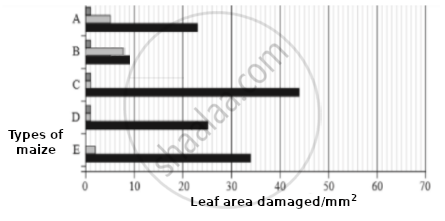Advertisements
Advertisements
प्रश्न
Which part of the plant is best suited for making virus-free plants and why?
उत्तर
Plant's apical and axillary meristems are ideal for producing virus-free plants. This is because the rate of division of a meristematic cell is faster than the rate of multiplication of a virus; hence, viruses are unable to infiltrate newly created meristematic cells. As a result, meristematic cells are virus-free despite the fact that the entire plant is infected. Using a meristem, a healthy plant can be rescued from a diseased plant using the micropropagation process. Virus-free plants such as bananas, sugarcane, and potatoes have been obtained using this method by scientists.
APPEARS IN
संबंधित प्रश्न
What is mycoherbicide?
What is a GMO?
How has RNAi technique helped to prevent the infestation of roots in tobacco plants by a nematode Meloidegyne incognitia?
What are Cry proteins?
Organic farmers prefer biological control of diseases and pests to the use of chemicals for the same purpose. Justify.
Explain the term biofortification. How is this technique useful for the production of ‘ golden rice?
A person deficient in the rhodopsin should be advised to take more of:
At what temperature milk gets pasteurised?
The trigger for activation of toxin of bacillus thuringlensis is ______.
Golden rice is ______.
Silencing of a gene could be achieved through tee use ______.
Bt cotton is not ______.
Golden Rice:
A. GM rice
B. Rich in Vit A
C. Prevents blindness
D. Bruise resistant
In view of the current food crisis, it is said, that we need another green revolution. Highlight the major limitations of the earlier green revolution.
Discuss the advantages of GMO.
Insects in the Lepidopteran group lay eggs on maize crops. The larvae on hatching feed on maize leaf and tender cob. In order to arrest the spread of three such Lepidopteran pests, Bt maize crops were introduced in an experimental field.
A study was carried out to see which of the three species of lepidopteran pests was most susceptible to Bt genes and its product.
The lepidopteran pests were allowed to feed on the same Bt-maize crops grown on 5 fields (A-E).
The graph below shows the leaf area damaged by these three pests after feeding on maize leaves for five days.

Key for lepidopteran insect pest species
 |
Species I |
 |
Species II |
 |
Species III |
Insect gut pH was recorded as 10, 8 and 6 respectively for Species I, II and III respectively.
(a) Evaluate the efficacy of the Bt crop on the feeding habits of the three species of stem borer and suggest which species is least susceptible to Bt toxin.
(b) Which species is most susceptible to Bt-maize, and explain why?
(c) Using the given information, suggest why a similar effect was not seen in the three insect species.
Certain specific bacterial spores are mixed in water and sprayed over Brassica crop to control butterfly caterpillars.
Name this bacterium and its mode of action on the butterfly caterpillars.
Compare and contrast the disadvantages of production of genetically modified crops.
